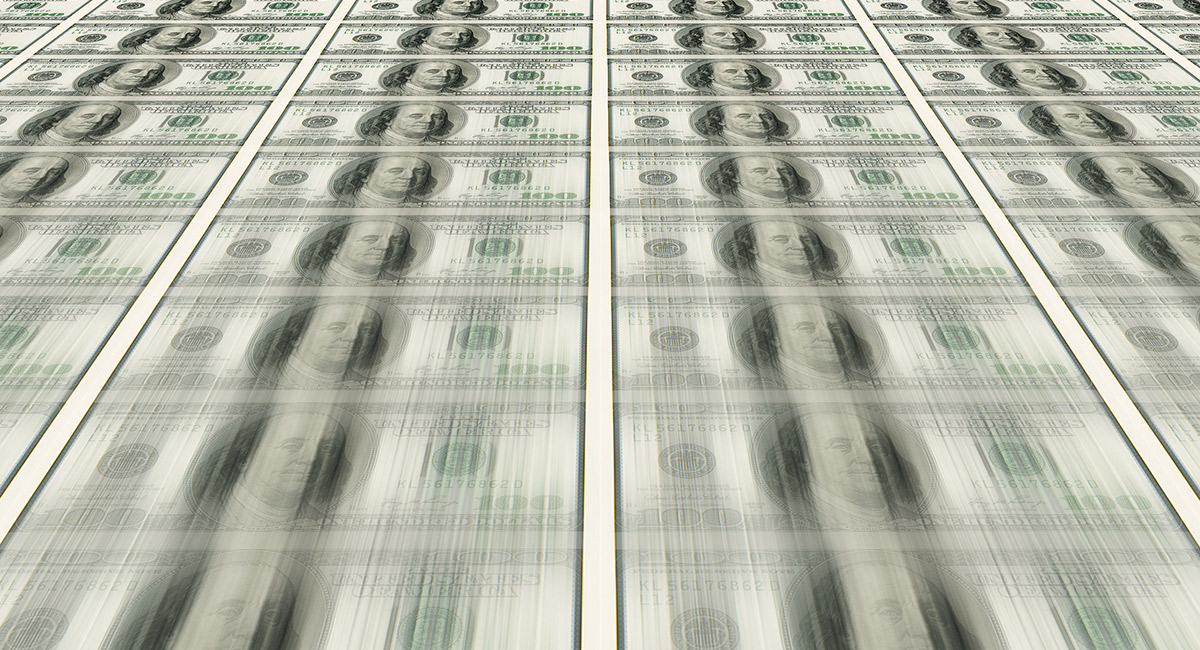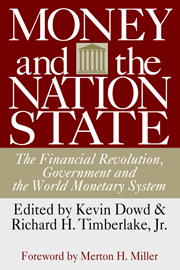As recently as September 2021, half of the Federal Open Market Committee expected no change in the federal-funds rate throughout 2022, and not a single member expected a rate hike of at least 75 basis points. Financial-market participants were also complacent about the inflation outlook. Based on fed-funds futures contract prices, the probability that the Fed wouldn’t raise rates by December 2022 was 49%. Market participants had seemingly swallowed the Fed propaganda, namely that temporary supply-chain glitches were causing inflation, that it was transitory and wouldn’t require a change in policy.
The transitory world changed in a hurry. That’s because January’s consumer-price index inflation headline number screamed 7.5% and February’s screamed even louder—7.9%. As a result, more than half of FOMC members now anticipate a rate hike of at least 75 basis points by the end of 2022, and none think the rate will be unchanged. Fed-funds futures contracts are now pricing in an 84% probability that the rate will be above 150 basis points by December.
Why was the FOMC and market consensus caught so flat-footed? And what can be done to prevent this kind of mistake going forward?
Fundamentally, two things need fixing: the Fed’s current modus operandi and widely held but mistaken views about how the Fed and the banking system interact to create inflation.
Ask Fed officers or observers how monetary policy works, and they’ll tell you it’s all about interest rates. Hence, the laser focus on the series of projected rate hikes later this year. But the reality is different. When it comes to inflation, what really matters isn’t so much the level of rates but what they imply for money growth. As Milton Friedman once observed, “Monetary policy is not about interest rates; it is about the growth of the quantity of [broad] money.”
The true source of the current inflation is the cumulative increase in the money supply measured by M2 since February 2020—an incredible 41.2%. In January the rate of growth of M2, even after three months of tapering bond purchases by the Fed, was still 12.6% over its level a year earlier. That’s about double the rate it needs to be to hit the Fed’s 2% inflation target.
Two sets of entities create money in the U.S. economy: the commercial banks and the Federal Reserve System. In normal times, the banks create most of the money by making loans. When banks grant a mortgage, for example, they credit the account of the borrower with new funds and write up a loan at the same time. Both sides of banks’ balance sheets expand.
After the financial crisis of 2008 and again during much of the pandemic, this mechanism wasn’t working because banks and borrowers were repairing balance sheets (in the former episode) or were risk-averse (in the latter), thus tamping down the demand for and supply of credit. The Fed stepped in with large-scale asset purchases from nonbanks, thereby creating new deposits—money—held by the public. The Fed created about 75% of the $6.4 trillion of new money in the system since February 2020.
Now that the pandemic is easing and normality is returning, banks are lending again, and the Fed is reducing its asset purchases. In the past three months, bank lending has picked up sharply, implying a surge in the demand for credit. So tentative tapering may not be enough for the Fed to slow monetary growth.
How should the Fed calibrate fed-funds rate increases? Ideally, the Fed needs to be sure that it raises rates sufficiently to slow monetary growth on a gradual and steady basis to a growth rate of around 5% to 6%. This would be consistent with 2% inflation, as it was between 2010 and 2019. But to hit this golden growth rate, the Fed must avoid two potential pitfalls.
The Fed could fail to raise rates enough, thereby giving banks and their customers an incentive to create excess credit. Given the surging demand for credit in a strengthening economy with rising inflation expectations, we could end the year with monetary growth still at its current excessive rate. That would mean that the current 7.9% inflation rate would persist not only this year but through 2023 and into 2024. To rein in inflation, the Fed needs to get out in front of the surge in demand for credit as the Bank of Japan did ahead of the second oil crisis in 1979-80.
The Fed also needs to be sure not to err too much in the other direction. If the Fed raises rates so much that the demand for loans evaporates, new deposit creation will plummet, and monetary growth will slump. With that, the Fed will have precipitated a recession as Paul Volcker did in 1980-81.
During the pandemic, the Fed made a colossal error by ignoring the growth rate in the money supply and creating a massive amount of excess money. The Fed must now slow money growth, but not too much to trigger a recession. To do that, the Fed has to put the money supply on its dashboard. At present it’s absent, which means the Fed is flying blind.











